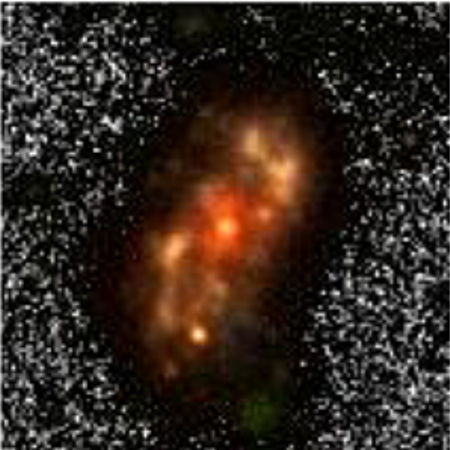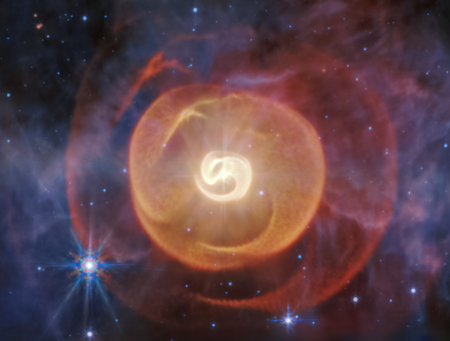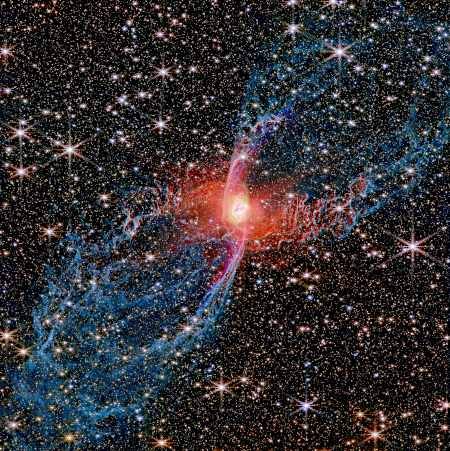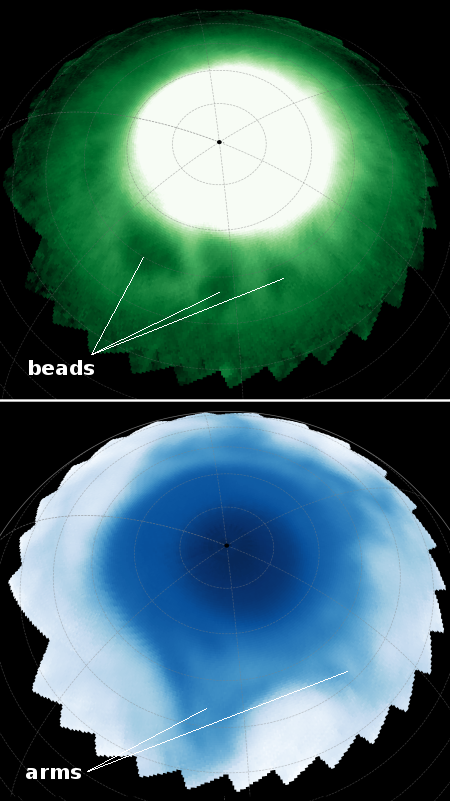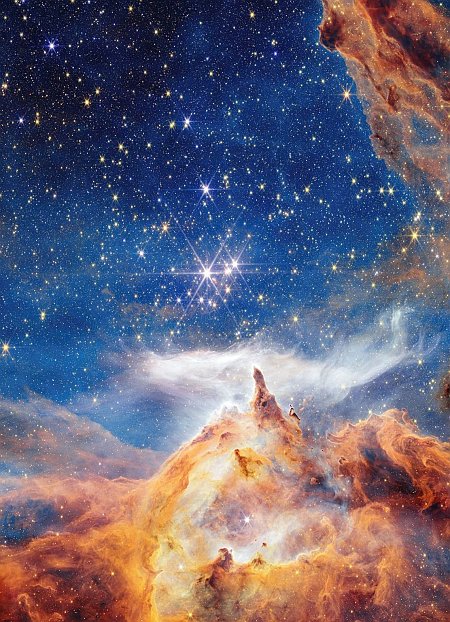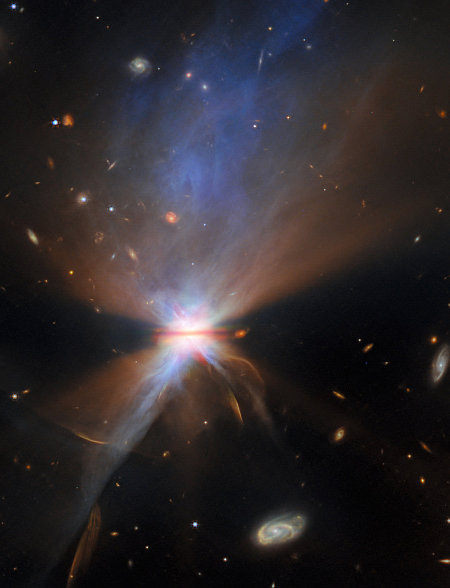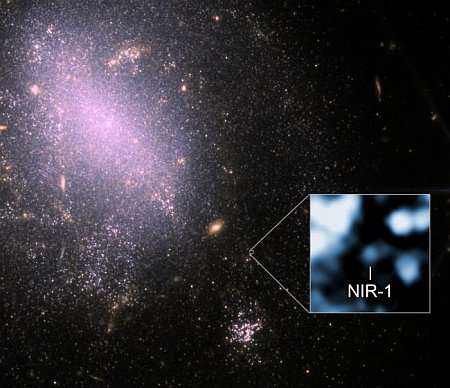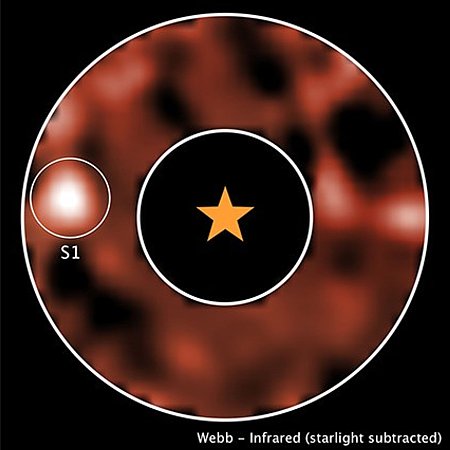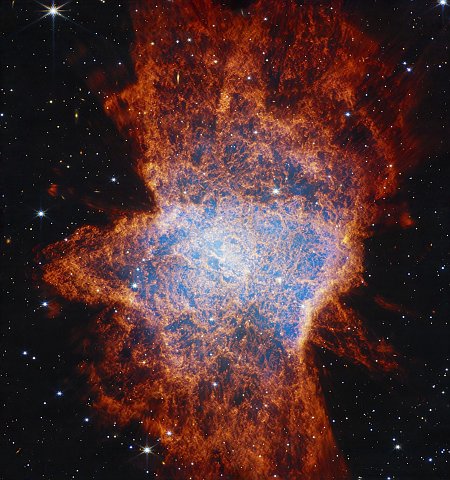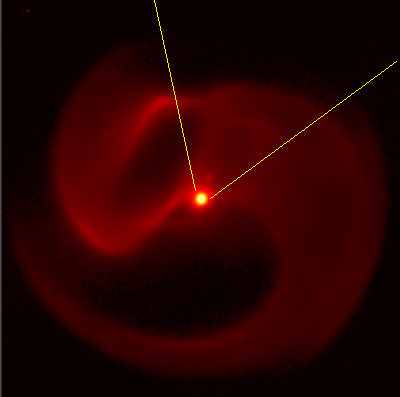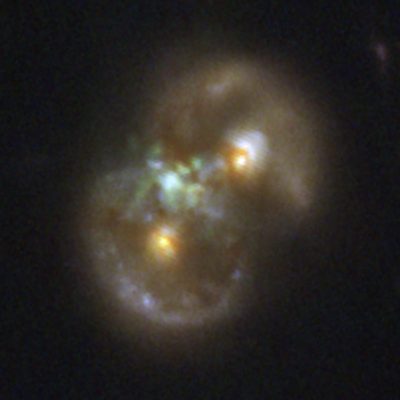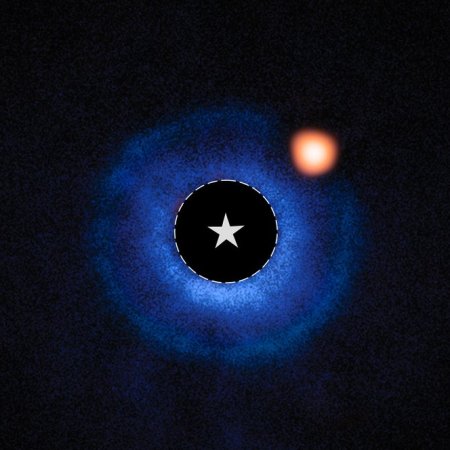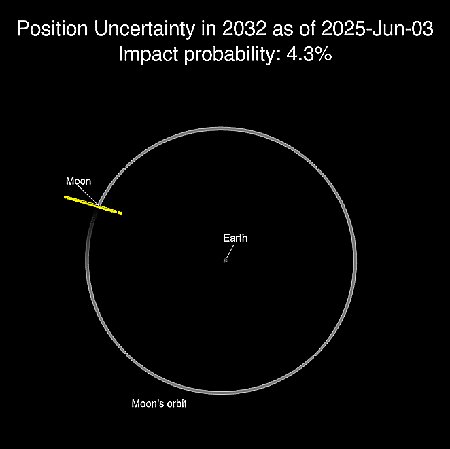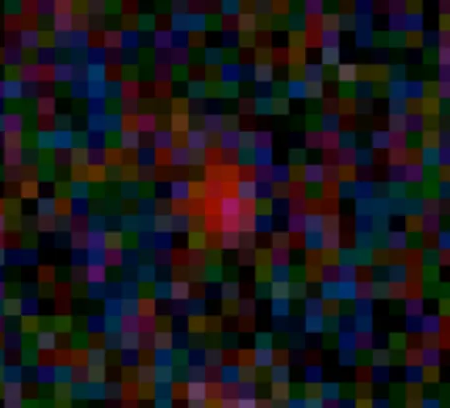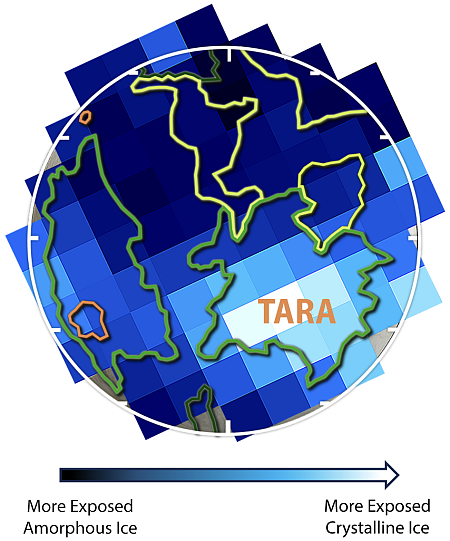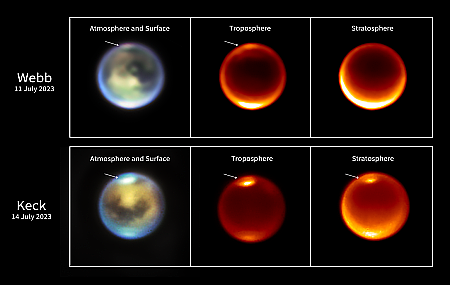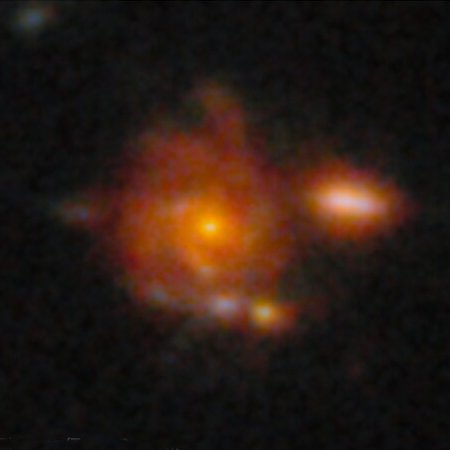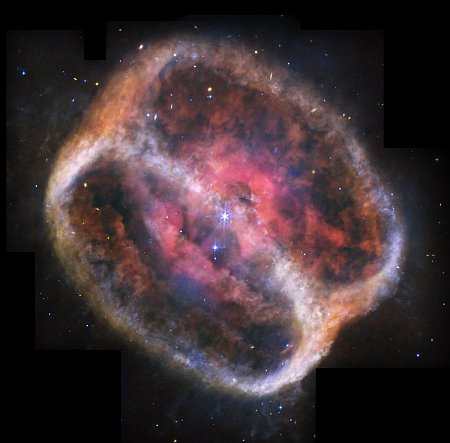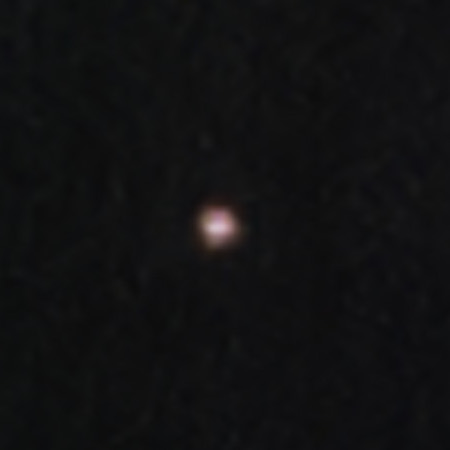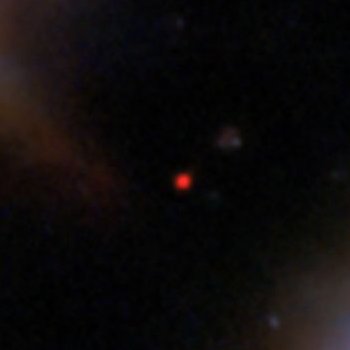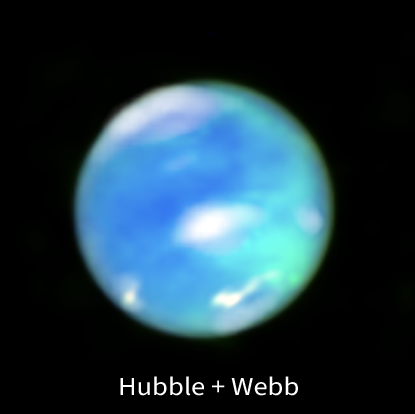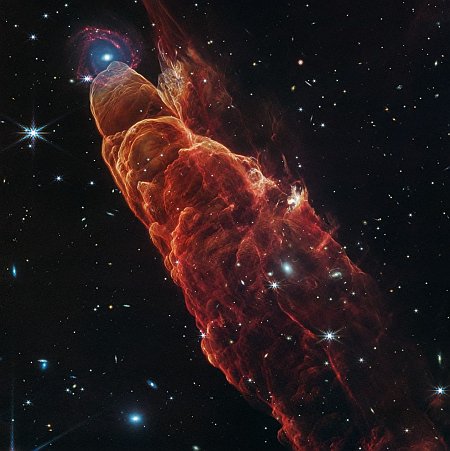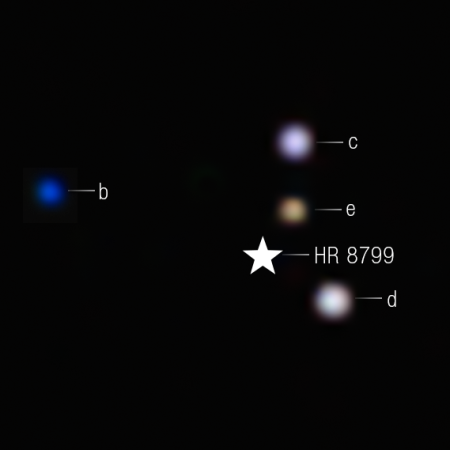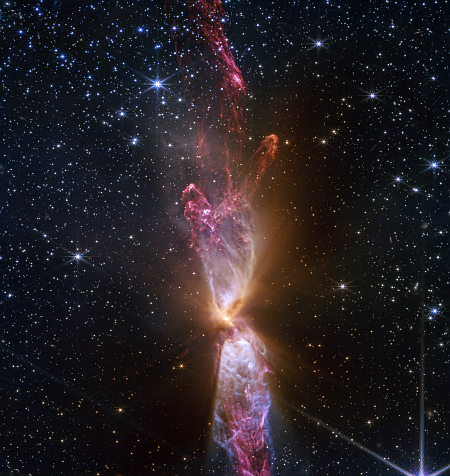Astronomers detect another galaxy that shouldn’t be there, so soon after the Big Bang
Using the Webb Space Telescopes astronomers have detected another galaxy that shouldn’t be there, so soon after the Big Bang.
The image to the right comes from figure 1 of the peer-reviewed paper. The galaxy’s two spiral arms form a backward “S” emanating out from the galaxy’s nucleus. From the press release:
Using JWST, researchers Rashi Jain and Yogesh Wadadekar spotted a galaxy remarkably similar to our own Milky Way. Yet this system formed when the cosmos was barely 1.5 billion years old—roughly a tenth of its present age. They named it Alaknanda, after the Himalayan river that is a twin headstream of the Ganga alongside the Mandakini—fittingly, the Hindi name for the Milky Way.
…It already has two sweeping spiral arms wrapped around a bright, rounded central region (the galaxy’s ‘bulge’), spanning about 30,000 light-years across. Even more impressively, it is annually churning out new stars, their combined mass roughly equivalent to 60 times the mass of our Sun. This rate is about 20 times that of the present-day Milky Way! About half of Alaknanda’s stars appear to have formed in only 200 million years—a blink in cosmic time.
This galaxy underlines the difficulty for cosmologists by much of Webb’s data of the early universe. Present theories of galaxy formation say it should take billions of years to form such a spiral galaxy, meaning it shouldn’t exist as yet so soon, only 1.5 billion years after the Big Bang.
Either the theories have to be revised substantially, or they are simply wrong entirely. Or we are missing or lacking in some fundamental information about the early universe that skews all our theories.
Using the Webb Space Telescopes astronomers have detected another galaxy that shouldn’t be there, so soon after the Big Bang.
The image to the right comes from figure 1 of the peer-reviewed paper. The galaxy’s two spiral arms form a backward “S” emanating out from the galaxy’s nucleus. From the press release:
Using JWST, researchers Rashi Jain and Yogesh Wadadekar spotted a galaxy remarkably similar to our own Milky Way. Yet this system formed when the cosmos was barely 1.5 billion years old—roughly a tenth of its present age. They named it Alaknanda, after the Himalayan river that is a twin headstream of the Ganga alongside the Mandakini—fittingly, the Hindi name for the Milky Way.
…It already has two sweeping spiral arms wrapped around a bright, rounded central region (the galaxy’s ‘bulge’), spanning about 30,000 light-years across. Even more impressively, it is annually churning out new stars, their combined mass roughly equivalent to 60 times the mass of our Sun. This rate is about 20 times that of the present-day Milky Way! About half of Alaknanda’s stars appear to have formed in only 200 million years—a blink in cosmic time.
This galaxy underlines the difficulty for cosmologists by much of Webb’s data of the early universe. Present theories of galaxy formation say it should take billions of years to form such a spiral galaxy, meaning it shouldn’t exist as yet so soon, only 1.5 billion years after the Big Bang.
Either the theories have to be revised substantially, or they are simply wrong entirely. Or we are missing or lacking in some fundamental information about the early universe that skews all our theories.

